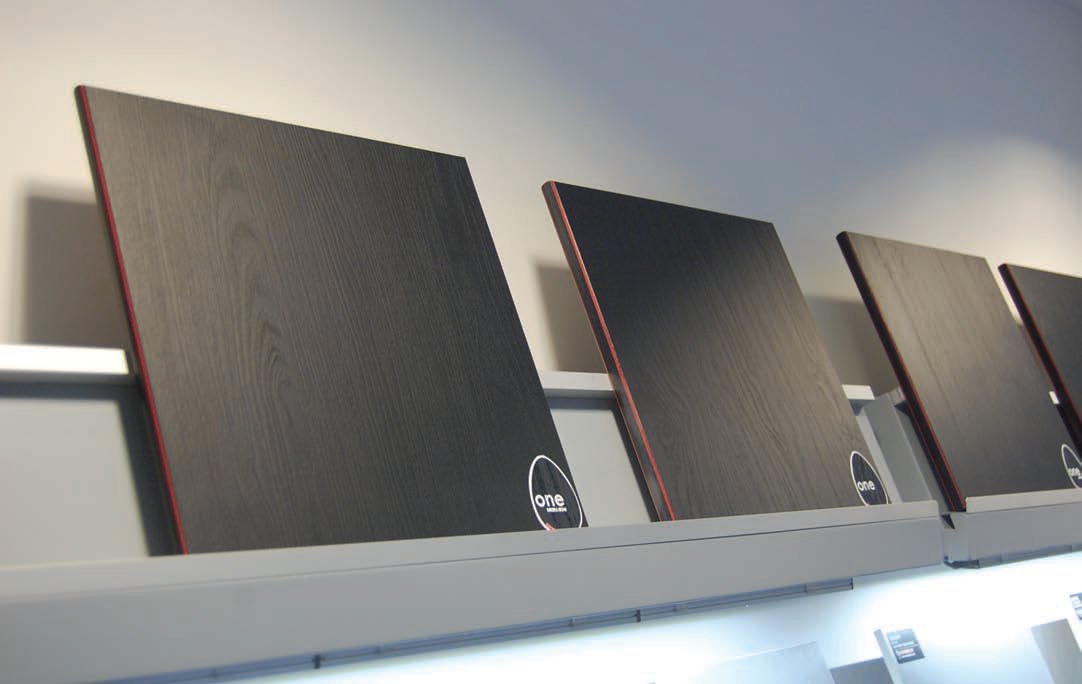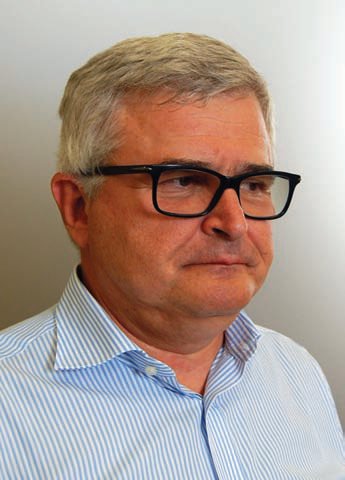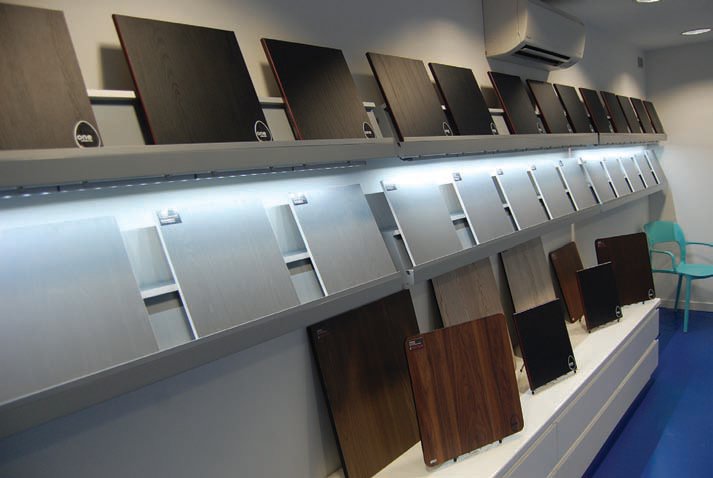A market leader in design
13 August 2015Sesa has been working hard from its base near Milan to stay ahead in the design trends for interior decor panels, as Stephen Powney reports.
Italian press plate manufacturer Sesa SpA came back from Interzum in Cologne this year (held in the week preceding Ligna), having made a stir with some of its new designs.
With such a high proportion of international visitors at this year's Interzum exhibition - 41,500 visitors out of a 57,500 total (a 17% growth) - the show is always a good opportunity to impress designers and manufacturers with the latest ideas and trends - and this year was no exception.
Sesa has been manufacturing press plates since 1950 and has a strong track record in the sector, being the claimed originator of the 'embossed in register' concept, which it developed back in 1998.
The first 'Speco' plates, with a highgloss surface, were also produced by Sesa - a surface named Mirror 8, which is still used today. The company is also known worldwide for its engraved finishes, such as Pearl, Ashwood and Uniwood.
The company's core business is the production of press plates for high pressure laminates and low pressure melamine faced particleboard or MDF.
Based in Busto Arsizio near Milan, WBPI's latest visit was a chance to catch up on Sesa's latest offerings to the market - and its assessment of those markets.
At Interzum it was showing its new 'One' Collection of deep black finishes. "The market was demanding something very new and natural compared to wood grain," said Marco Santori, Sesa chief executive. Even before Interzum, it had sold several of the plate designs to leading players in the market.
"It was very interesting to many people at Interzum," said Mr Santori.
It took a year to develop the One Collection concept and a series of samples are on display in the company's showroom. An egg logo has been used for displaying the new collection.
"We intentionally used the egg symbol because it represents the beginning of life," explained Mr Santori. "There is continuous development in finishes.
"Everyone is asking, 'what will be the next finish?' But it takes up to three or four years before a market gets used to a new finish.
"We must be like the car industry by presenting a concept, then letting the customers get used to it," said Mr Santori.
To illustrate the point he highlighted the fact that embossed in register technology has been around since the 1980s, but the concept was not developed for flooring applications until 1998, with the first laminate flooring boards being produced the following year using the technique, and this was presented at Surfaces 99 in Las Vegas by Sesa, in cooperation with Uniboard Canada.
The company has developed some 3,500 plate samples in total - all filed in its extensive plate library at its headquarters. Of this, Mr Santori reckons about 2-300 have been used commercially.
Sesa's markets
"In the last couple of years we have seen a revitalising of many markets," said Mr Santori.
"Europe is quite slow compared to other markets like Turkey and Asia, but because we serve markets globally, we do not suffer if any one particular market changes."
The global nature of its work, and the pick-up in certain markets, means Sesa has looked to bolster staffing levels: "We are improving our sales team by adding one or two additional people by the end of the year because we need to cover long distances," explained the chief executive. South America has been a very active market during the past two years, though Mr Santori admits it has slowed somewhat of late.
Turning to India, he described that market as "very lively". Sesa started an operation there in 2000 in partnership with an Indian family. A change occurred in 2011 when the senior Indian partner left the company, followed in 2013 by Sesa becoming the 100% owner of the operation, which has 20 staff.
Currently, there are no chrome plating facilities for coating the press plates at the Indian plant, but Mr Santori says that the high proportion of HPL in India means such a facility may not necessarily be needed.
On the trends front, Sesa says low matt to rustic are in fashion at present. "In the northern European markets, the rustic look is very warmly welcomed," said Mr Santori. This includes unfinished wood grain with cracks, knots and lines of the cutting knife.
There is also a revival of the stone look and the industrial concept is moving into houses, in applications such as kitchen worktops.
Countries such as Italy prefer a more finished design or a 'vintage used' look, while in Asia the leather appearance is popular for use on applications such as wardrobes.
Innovation, Mr Santori argues, is key to success in a sector where competition has grown tougher following the global recession.
To this end, its team of designers in the in-house graphic design department is continually working on new projects.
On the factory floor, advances have been made in technology - the company made the switch from chemical etching to full digital technology back in 2005.
More recently, it has introduced a barcode system for plate identification and it has a 24-hour operation adding textures to plates. Additional printing units have been added in what is traditionally a bottleneck area in the production process.
Looking forward, Sesa is projecting a 7-8% increase in sales in 2015, with a turnover of in the region of €13m.
The company is excited about the upcoming Salon de Mobile exhibition in Milan next year. This is the largest furniture fair in the world and it attracts the global design community.
Sesa will be putting significant resources behind its attendance, with Mr Santori expecting to pick up new customers at the event.



